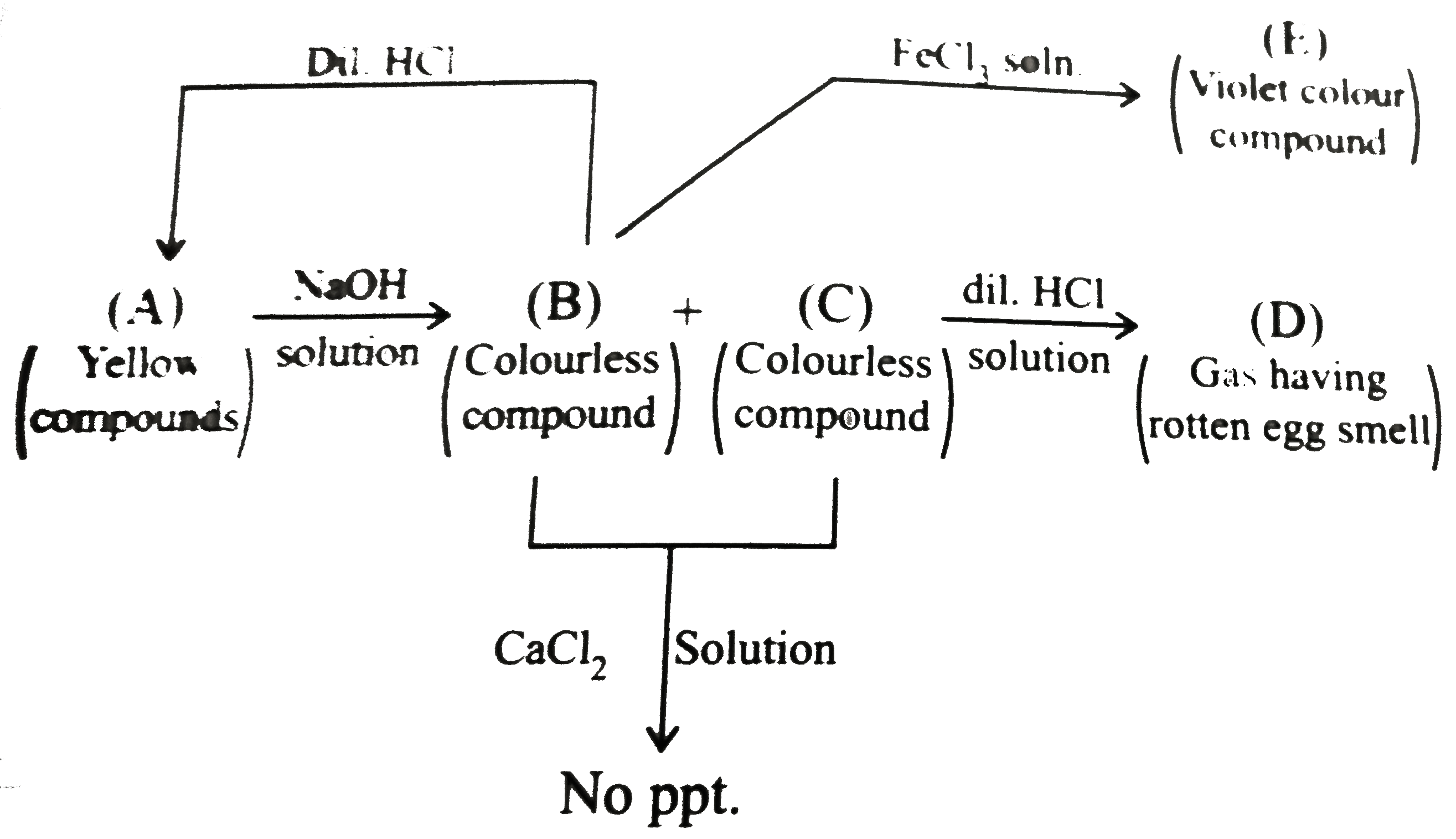Orange coloured sodium cobaltinitrite Na3[Co(NO3)6] is used for the detection of KΘ which gives …… ppt due to the formation of pot sod cobaltinitrite K2Na[Co(NO2)6]
White
Orange
Yellow
Brown
The correct Answer is:c
To solve the question regarding the detection of potassium ion (K⁺) using sodium cobaltinitrite (Na₃(Co(NO₂)₆)), we can follow these steps:
1. Identify the Reactants:
- The reactant mentioned is sodium cobaltinitrite, which has the formula Na₃(Co(NO₂)₆). This compound is orange in color.
2. Understand the Reaction:
- When potassium ions (K⁺) are present, they react with sodium cobaltinitrite. In this reaction, the potassium ions replace the sodium ions in the cobaltinitrite complex.
3. Write the Reaction:
- The reaction can be represented as:
3K++Na3(Co(NO2)6)→K2Na(Co(NO2)6)+2Na+
- Here, potassium ions replace two sodium ions, forming potassium sodium cobaltinitrite.
4. Determine the Color of the Precipitate:
- The product formed, potassium sodium cobaltinitrite (K₂Na(Co(NO₂)₆)), is known to produce a yellow precipitate.
5. Conclusion:
- Therefore, the color of the precipitate formed when potassium ions react with sodium cobaltinitrite is yellow.
Final Answer:
The color of the precipitate is yellow.
- The reactant mentioned is sodium cobaltinitrite, which has the formula Na₃(Co(NO₂)₆). This compound is orange in color.
- When potassium ions (K⁺) are present, they react with sodium cobaltinitrite. In this reaction, the potassium ions replace the sodium ions in the cobaltinitrite complex.
- The reaction can be represented as:
3K++Na3(Co(NO2)6)→K2Na(Co(NO2)6)+2Na+
- Here, potassium ions replace two sodium ions, forming potassium sodium cobaltinitrite.
- The product formed, potassium sodium cobaltinitrite (K₂Na(Co(NO₂)₆)), is known to produce a yellow precipitate.
- Therefore, the color of the precipitate formed when potassium ions react with sodium cobaltinitrite is yellow.
The color of the precipitate is yellow.
Topper's Solved these Questions
- QUALITATIVE INORGANIC SALT ANALYSISBOOK - CENGAGE CHEMISTRY ENGLISHCHAPTER - QUALITATIVE INORGANIC SALT ANALYSISEXERCISE - Viva Voce Questions And Part-A (Analysis Of Anions)
30 Videos
- QUALITATIVE INORGANIC SALT ANALYSISBOOK - CENGAGE CHEMISTRY ENGLISHCHAPTER - QUALITATIVE INORGANIC SALT ANALYSISEXERCISE - Viva Voce Questions And Part-B (Dry Tests)
9 Videos
- QUALITATIVE INORGANIC SALT ANALYSISBOOK - CENGAGE CHEMISTRY ENGLISHCHAPTER - QUALITATIVE INORGANIC SALT ANALYSISEXERCISE - Ex 8.1
14 Videos
- P-BLOCK GROUP 18 ELEMENTS - THE INERT GASESBOOK - CENGAGE CHEMISTRY ENGLISHCHAPTER - P-BLOCK GROUP 18 ELEMENTS - THE INERT GASESEXERCISE - Ex 5.1 (Objective)
14 Videos
- REDUCTION AND OXIDATION REACTION OF ORGANIC COMPOUNDSBOOK - CENGAGE CHEMISTRY ENGLISHCHAPTER - REDUCTION AND OXIDATION REACTION OF ORGANIC COMPOUNDSEXERCISE - SUBJECTIVE TYPE
4 Videos
Similar Questions
When K4[Fe(CN)6] is treated with FeCI3 a blue colour is obtained It is due to the formation of .
View SolutionPotassium hexanitrocobaltate III K3[Co(NO2)6] is called ________.
View SolutionWrite IUPAC name of Na3[Co(NO2)6]
View SolutionMelting point of mixture of Na2CO3+K2CO3 is :
View SolutionAcidified K2Cr2O7 solution turns green when Na2SO3 is added to it. This is due to the formation of
View SolutionNa2CO3+KNO3→No reaction
View Solution
Compound (B) on reaction with [Na(en)3][NO3)2 gives a coloured complex exhibility
View SolutionThe sodium carbonate beat test in which Na2CO3 is used insteal of borax .it is suitable to chromium and
View SolutionThe brown ring test for NO−2 and NO−3 is due to the formation of complex ion with formula :
View SolutionThe IUPAC nomenclature for the complex Na[PtBrCl(NO2)(NH3)] is:
View Solution
